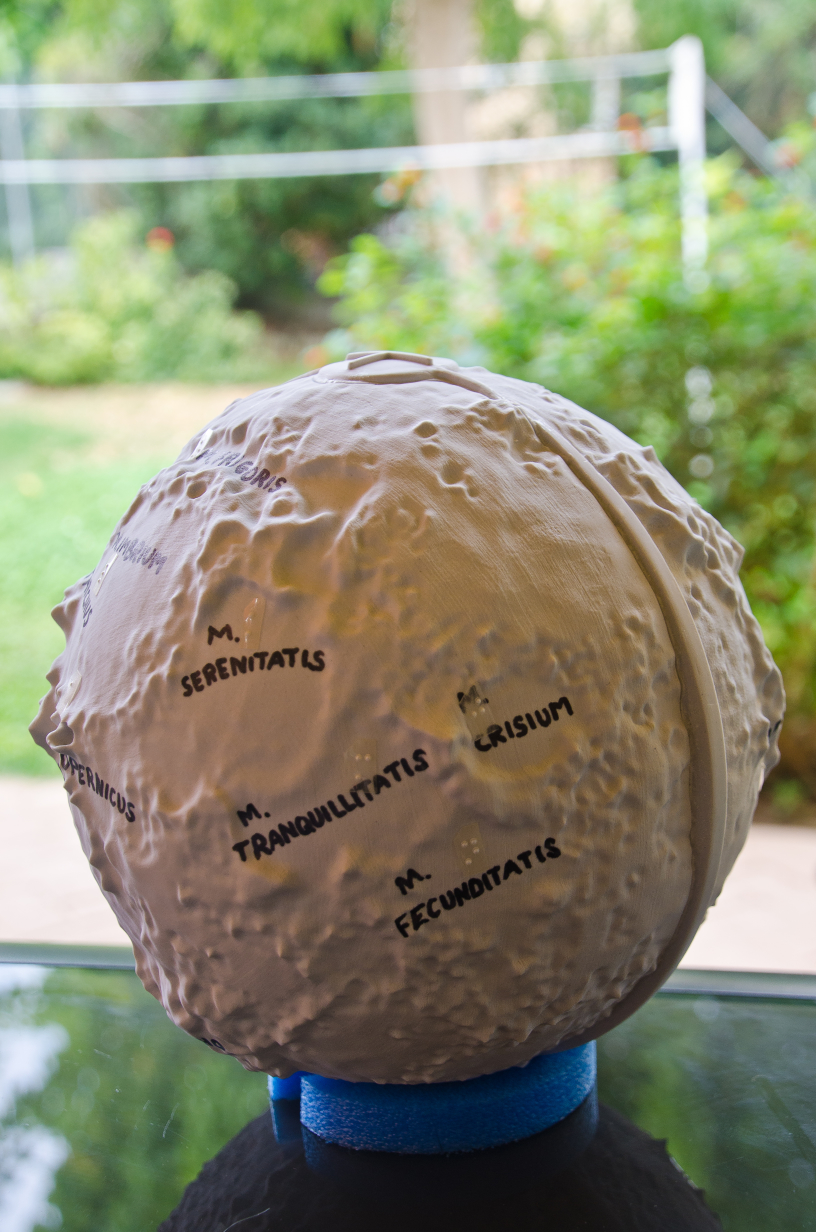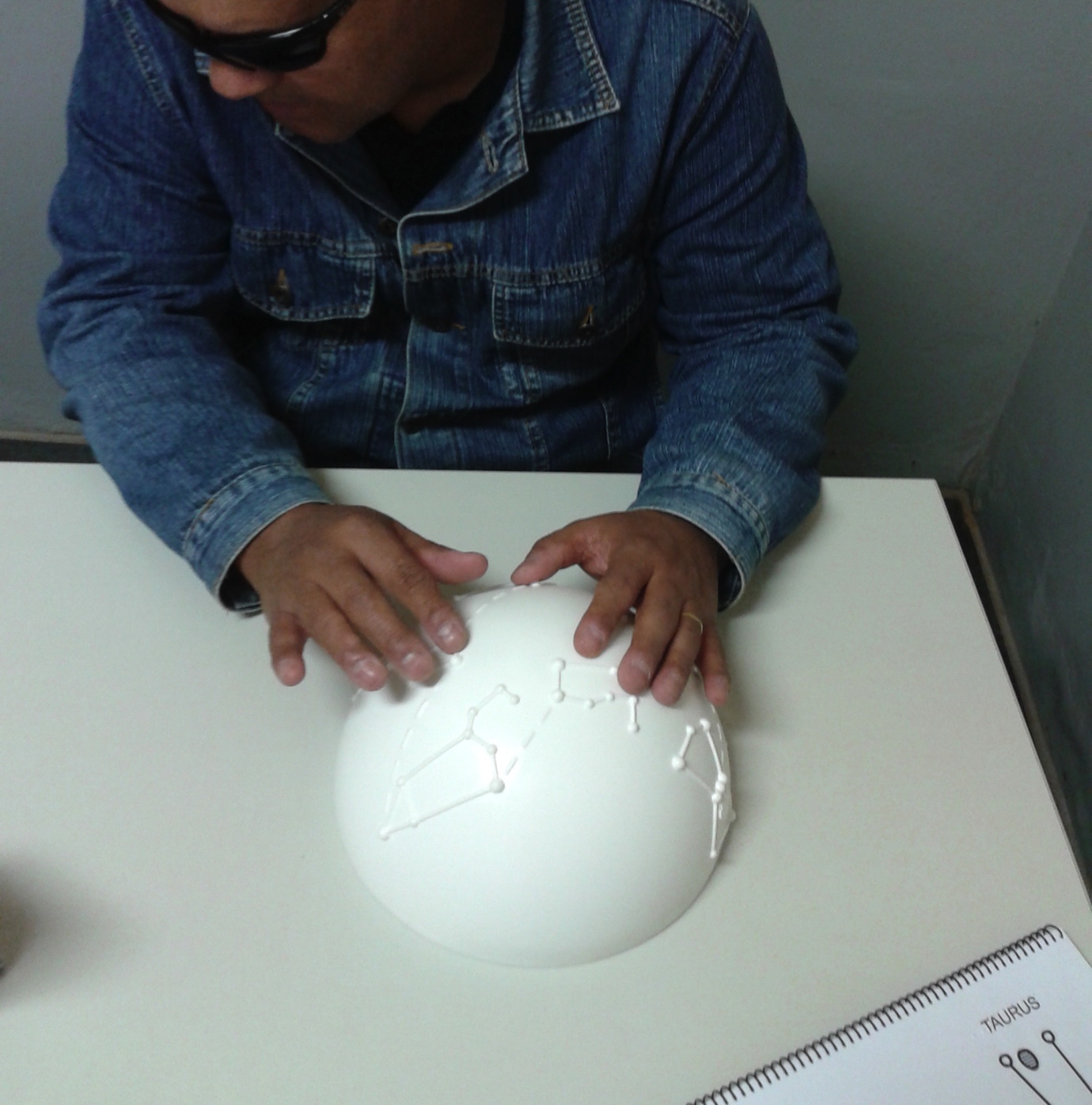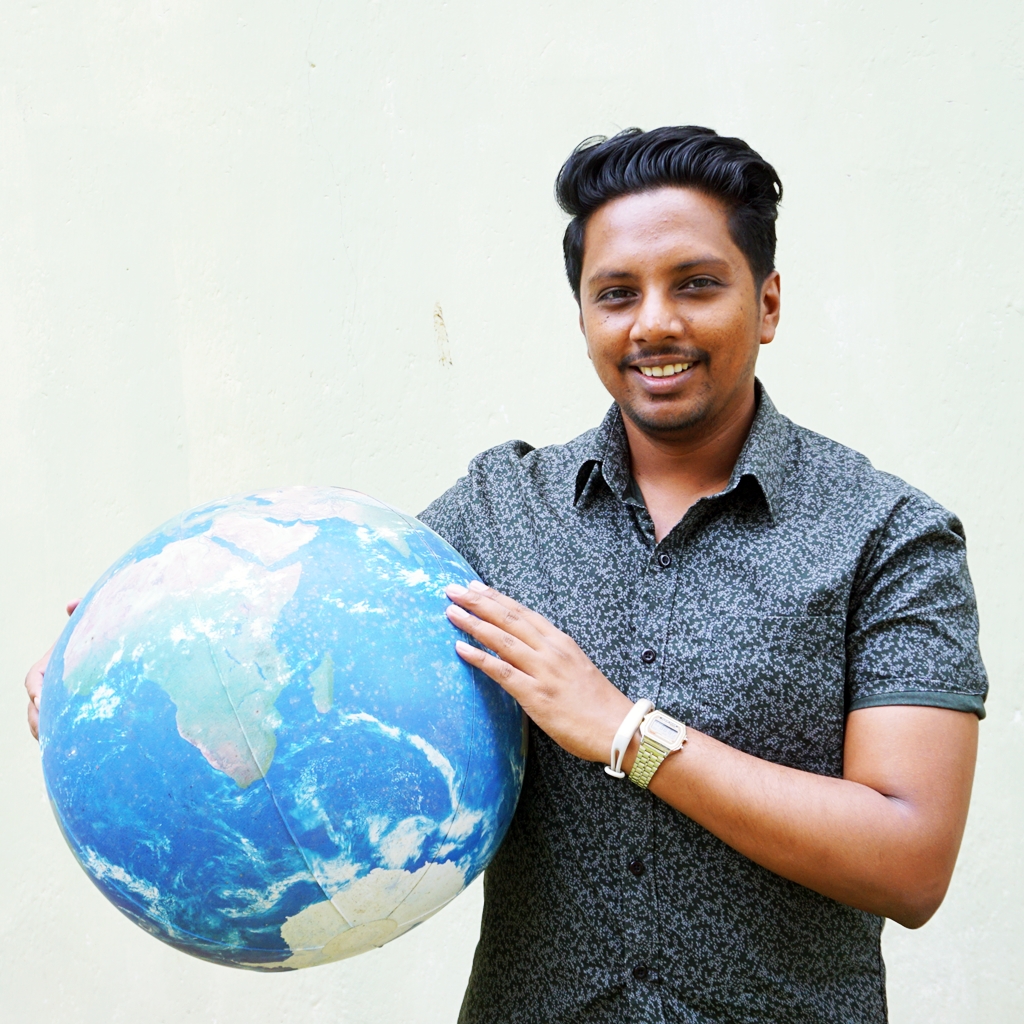GAM 2017 Blog
- Published: Monday, April 10 2017 11:22
By Amelia Ortiz-Gil, Lina Canas & Thilina Heenatigala
 A moon model in 3D with tactile features, high contrast text and braille letters.
A moon model in 3D with tactile features, high contrast text and braille letters.
As you probably know already, the G in GAM stands for Global, meaning everywhere but also everybody. And this year we would like to encourage and help all of you who are organizing events and activities to address them truly to everybody.
All of us are different, but have many things in common, and one of them is the awe that we feel when contemplating or talking about the Universe. The night sky is a gift of nature that appeals to anyone, regardless of age, citizenship, gender, social status, physical condition or cognitive capabilities. Everybody is able to enjoy the cosmos in their own way, which means that communicators, outreach agents and people of the sort have the obligation to make sure that everybody enjoys as much as possible.
In some cases, this might seem very difficult, perhaps even impossible. But, should we agree with Alice when she says “One can’t believe impossible things?” Or will we answer together with the Queen “Why, sometimes I believed as many as six impossible things before breakfast! "? Well, maybe not six but two or three will not do any harm, right? A blind person "seeing" the night sky, or a deaf one "listening" to the radio emission from a pulsar or Jupiter. Can we do that?
It is difficult but not impossible. Technology is advancing pretty fast and there will be more and more aids in the future that will level the playground specially for people with physical special needs. But we also have something even more valuable: human ingenuity. And through carefully thinking and learning how people relate to the environment, and how they receive, perceive and process information we can design activities that will be suitable for most if not all the variety in capacities that a group from the general public can exhibit.
This is technically called the Universal Design for Learning (UDL), which can be applied both to formal and informal instruction. A crude approach to the basics of UDL is to try to convey the information through as many different sensorial channels as possible and to use different tools (texts, images, comics, different kinds of sound, music, etc.), without forgetting the usual communication rules like taking into account the previous knowledge of your public. This benefits everybody, not just people who might have some special needs. The more senses we apply in the learning process the better we remember the contents afterwards, and this applies to anyone regardless of their abilities.
 A dome with some northern constellations engraved. This is the tactile support for the planetarium show "The Sky in your Hands".
A dome with some northern constellations engraved. This is the tactile support for the planetarium show "The Sky in your Hands".
Have I convinced you that it is important to include everyone in our activities, and that we can do the 'apparently' impossible things? But you probably still think this is something very difficult to attain. Well, we have some good news!
The International Astronomical Union has recently created a Working Group on Inclusion and Equity, which gathers experts from all over the world who are trying to adapt astronomy to the variety of persons that populate this planet, thinking that no one should be left out. And to help and encourage you to think 'differently' to include everybody, we have teamed up this year with GAM 2017 and we'll be publishing selected resources every day during GAM that is accessible to a public broader than usual, mainly adapted to different kinds of physical needs but equally enjoyable to anyone. For example, it is great to see the Moon but touching its craters, maria and mountains is exciting to persons who are blind and to those with normal vision alike!
So, why not trying one or several of the activities that we are featuring for you during this month? You will also find the keys that will help you make your own accessible activities and events! And if you want to check more of these activities, please visit the repository at the working group's website.
Let's make this GAM 2017 a truly GLOBAL event for all!
 |
Dr. Amelia Ortiz-Gil is an astronomer at the Astronomical Observatory of the University of Valencia, Spain. She is currently working as an Outreach and Public Officer. She coordinated the astronomical activities for disabled people of the Spanish node during the International Year of Astronomy in 2009. Dr. Ortiz-Gil is currently co-chair of AWB's Program for People with Disabilities. |
 |
Lina Canas is currently based at National Astronomical Observatory of Japan in Mitaka, Tokyo working for the IAU Office for Astronomy Outreach. Throughout the years she has collaborated with many education and outreach associations in different projects, allowing her to know first-hand that the world is full of amazing people doing amazing things! Many of her hobbies overlap with her work, which sometimes is confusingly fun & confusingly stressing at the same time. |
 |
Thilina Heenatigala is an astronomy communicator with a focus on developing astronomy education globally. He currently collaborates with NUCLIO, Europlanet and IAU astroEDU at Leiden Observatory. Apart from astronomy, he keeps himself busy with traveling, black & white street photography, and social media storytelling. Follow him on Twitter @ThilinaH https://twitter.com/ThilinaH |








